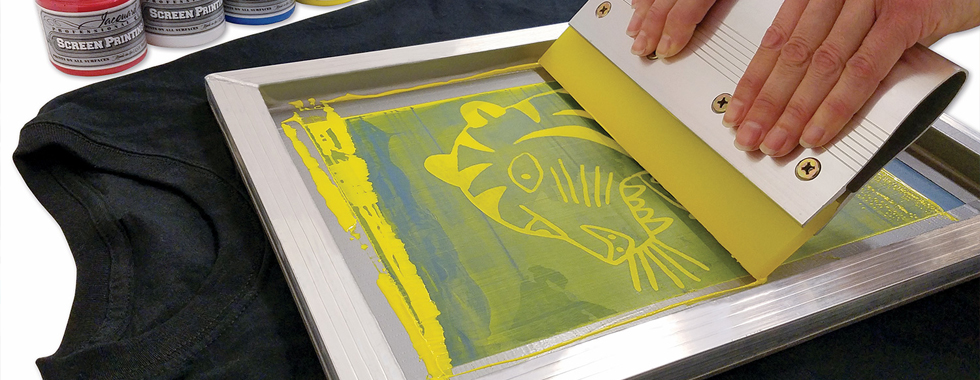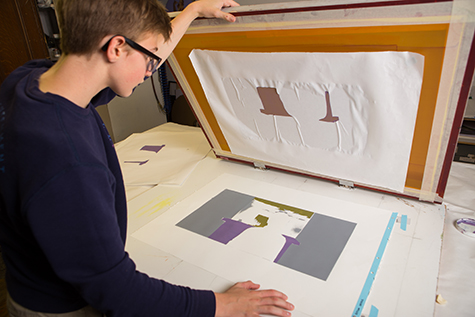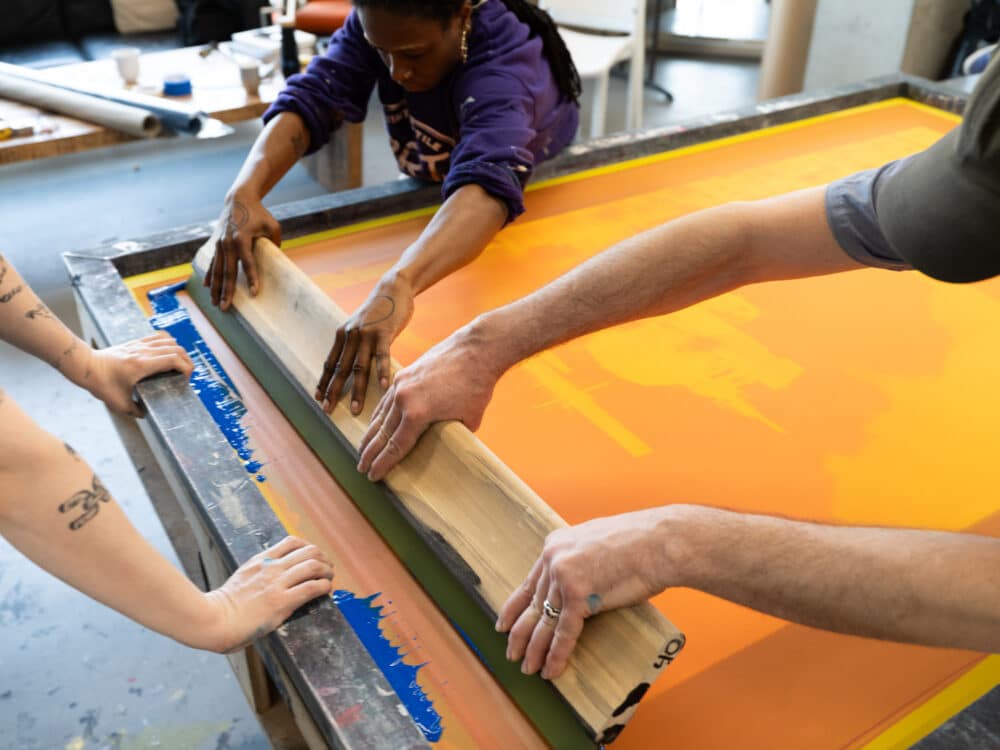ChatGPT said: Unbiased breakdown of 10:9 Design reviews: what you should know before ordering
Discover the Different Kinds Of Screen Printing Techniques for Your Following Task
Screen printing provides a diverse variety of strategies that can boost any type of imaginative job. From conventional techniques like serigraphy to modern-day technologies such as direct-to-garment printing, each method has its one-of-a-kind benefits. Specialty options, consisting of environmentally friendly and metal inks, introduce even much more opportunities. Comprehending these methods can significantly impact the last end result. Nevertheless, the difficulty lies in picking one of the most suitable approach for certain requirements and desired effects. What elements should one think about?

The Basics of Screen Printing
Screen printing may appear complicated, it is basically a simple procedure that involves transferring ink via a mesh screen onto various surfaces. The method begins with the production of a stencil, which defines the layout to be published. This pattern is affixed to a mesh screen, normally constructed from polyester or nylon. When the stencil remains in place, ink is put on the screen and pressed with the mesh utilizing a squeegee, resulting in the desired pattern being printed on the underlying material.
Screen printing can be done on a vast array of substratums, consisting of paper, plastic, and textile, making it a versatile option for numerous tasks. The procedure allows for intricate designs and vivid shades, making it preferred in sectors such as marketing, fashion, and art. Recognizing these basics furnishes individuals with the foundational knowledge required to check out more advanced techniques in screen printing.
Traditional Screen Printing Techniques
Typical screen printing techniques have actually been used for centuries, maintaining the craftsmanship and creativity of this technique. This technique makes use of a mesh screen to transfer ink onto a substratum, such as material or paper, enabling lively and lasting styles. The process starts with developing a pattern, which obstructs specific locations of the screen to control where the ink will certainly be applied.
One prominent strategy is serigraphy, commonly utilized for restricted versions and creative prints. Another is the use of water-based inks, which are eco-friendly and give a soft feeling on fabrics - 10:9 Design Texas. Furthermore, standard approaches can consist of hands-on printing, where craftsmens apply ink with a squeegee, making sure accuracy and interest to detail
These techniques stay valued in the industry for their tactile high quality and the distinct appearances they create, appealing to both consumers and makers who value the heritage of screen printing.
Digital Screen Printing Innovations
As the demand for faster manufacturing and customization in the printing sector has surged, digital screen printing technologies have actually emerged as a game-changer. This technology mixes traditional screen printing techniques with digital procedures, permitting rapid prototyping and intricate designs that were formerly hard to attain. One substantial development is the introduction of direct-to-garment (DTG) printing, which facilitates top quality, full-color prints on various textiles without the requirement for screens. Additionally, improvements in ink formulations have caused environmentally friendly options that keep lively colors while reducing ecological effect. Using automated systems better enhances production, reducing labor expenses and enhancing accuracy. These developments not just satisfy small set orders and individualized styles but likewise enable quicker turn-around times, making them ideal for organizations focused on conference customer demands in a fast-paced market. Digital screen printing, subsequently, represents an essential advancement in the domain of printing strategies.
Specialty Screen Printing Techniques
Discovering specialty screen printing techniques reveals a diverse selection of techniques that push the limits of creativity and performance in the printing sector. Amongst these, glow-in-the-dark inks provide a distinct aesthetic effect, making styles come to life in low-light problems. Metal inks, known for their sparkling surface, include a touch of deluxe to printed products. An additional cutting-edge technique is discharge printing, which gets rid of color from the textile as opposed to including ink, causing a soft, vintage feel. High-density printing develops an elevated appearance externally, boosting tactile involvement. In addition, water-based inks are gaining popularity for their dynamic colors and reduced environmental impact. Each of these specialized techniques accommodates particular style needs, enabling brands and artists to produce standout products that reverberate with their audiences. By leveraging these methods, organizations can boost their screen printing projects to new heights, ensuring remarkable perceptions.
Eco-Friendly Screen Printing Options
Eco-friendly screen printing alternatives are obtaining traction as the industry changes towards sustainability. Sustainable ink selections and making use of naturally degradable products are vital parts in reducing the ecological influence of the printing procedure. By embracing these methods, screen printers can add to an extra lasting future while maintaining top quality results.
Sustainable Ink Selections

Biodegradable Products Usage
As the screen printing sector advances, the incorporation of eco-friendly materials is becoming progressively essential for environmentally aware practices. Developers and producers are currently exploring inks and substratums made from all-natural, eco-friendly resources that decompose more effectively than traditional counterparts. These biodegradable options minimize plastic waste and minimize ecological impact, straightening with the growing need for lasting products.
Common instances include water-based inks and organic cotton textiles, both of which lessen unsafe chemicals and advertise eco-friendliness. Brands that adopt these materials typically improve their market allure, drawing in customers who prioritize sustainability. As understanding of ecological problems proceeds to increase, the shift towards eco-friendly products in screen printing is likely to get energy, promoting a greener sector criterion.
Choosing the Right Strategy for Your Job
Exactly how can one determine one of the most appropriate screen printing technique for a certain project? The choice rests on a number of elements, including the material to be published on, the complexity of the style, and the preferred manufacturing volume - 10:9 Design Screen Printing. Direct-to-garment printing is excellent for elaborate styles with numerous colors, while typical screen find more information printing stands out for bigger runs of easier graphics.
Additionally, consideration of the end-use of the printed product is necessary. For outdoor applications, methods that offer resilience and weather condition resistance, such as plastisol ink, may be liked. Conversely, environmentally-conscious projects may take advantage of naturally degradable products or water-based inks.
Ultimately, understanding the task's distinct needs enables an educated choice, making certain both visual allure and functional longevity. By assessing layout intricacy, product compatibility, and manufacturing scale, one can properly pick one of the most proper screen printing method to satisfy their job's objectives.
Often Asked Inquiries
What Is the History of Screen Printing?
Screen printing came from in old China around 1000 ADVERTISEMENT, advancing via Japan and Europe. By the 20th century, it came to be preferred in industrial art and fashion, transforming how layouts were produced and dispersed globally.

How Do I Prepare Art Work for Screen Printing?
To prepare art work for screen printing, one need to assure high resolution, use an ideal shade mode, develop separate layers for each color, and convert text to describes, ensuring compatibility with the printing process and preferred outcome.
What Materials Are Best for Screen Printing?
The very best materials for screen printing include high-quality inks, resilient screens, and ideal substratums like cotton, polyester, or blends. In addition, making use of suitable emulsion and mops can enhance the printing process and final results.
Can I Screen Publish in the house?
Yes, screen printing at home is feasible. With the appropriate materials, setup, and strategies, people can create top notch prints. Nonetheless, careful consideration of work space and equipment is essential for successful results.

What Are Common Mistakes in Screen Printing?
Typical errors in screen printing include inappropriate exposure times, poor ink uniformity, misalignment of displays, insufficient cleaning of materials, and disregarding to check prints. These errors can endanger the top quality and precision of the final product.
Screen printing might appear facility, it is essentially a straightforward procedure that involves moving ink with a mesh screen onto numerous surfaces. As the demand for faster production and modification in the printing market has risen, electronic screen printing innovations have arised as a game-changer. Checking out specialty screen printing approaches exposes a varied selection of methods that push the borders of creativity and performance in the printing sector. The finest materials for screen printing consist of premium inks, durable displays, and ideal substrates like cotton, polyester, or blends (10:9 Design Embroidery). Usual mistakes in screen printing consist of inappropriate direct exposure pvc custom signs times, inadequate ink uniformity, imbalance of displays, insufficient cleansing of materials, and ignoring to check prints